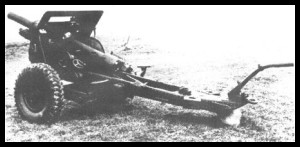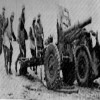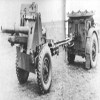|
|
||||||||||||||||||||||||||||||||||||||||||||||||||||||||||||||||||||||||||||||||||||||||||||||||||||||||||||||||||||||||||||||||||||||||||||||||||||||||||||||||||||||||||||||||||||||||||||||||||||||||||||||||||||||||||||||||||||||||||||||||||||||||||||||
 |
||||||||||||||||||||||||||||||||||||||||||||||||||||||||||||||||||||||||||||||||||||||||||||||||||||||||||||||||||||||||||||||||||||||||||||||||||||||||||||||||||||||||||||||||||||||||||||||||||||||||||||||||||||||||||||||||||||||||||||||||||||||||||||||
| By Lasse Jensen |
Last updated 18 Marts 2002 |
|||||||||||||||||||||||||||||||||||||||||||||||||||||||||||||||||||||||||||||||||||||||||||||||||||||||||||||||||||||||||||||||||||||||||||||||||||||||||||||||||||||||||||||||||||||||||||||||||||||||||||||||||||||||||||||||||||||||||||||||||||||||||||||
 Royal Ordnance Quick Fire 25 pounder Mark I
Royal Ordnance Quick Fire 25 pounder Mark I
|
||||||||||||||||||||||||||||||||||||||||||||||||||||||||||||||||||||||||||||||||||||||||||||||||||||||||||||||||||||||||||||||||||||||||||||||||||||||||||||||||||||||||||||||||||||||||||||||||||||||||||||||||||||||||||||||||||||||||||||||||||||||||||||||
|
||||||||||||||||||||||||||||||||||||||||||||||||||||||||||||||||||||||||||||||||||||||||||||||||||||||||||||||||||||||||||||||||||||||||||||||||||||||||||||||||||||||||||||||||||||||||||||||||||||||||||||||||||||||||||||||||||||||||||||||||||||||||||||||
|
|
||||||||||||||||||||||||||||||||||||||||||||||||||||||||||||||||||||||||||||||||||||||||||||||||||||||||||||||||||||||||||||||||||||||||||||||||||||||||||||||||||||||||||||||||||||||||||||||||||||||||||||||||||||||||||||||||||||||||||||||||||||||||||||||
|
As the 18pdr Mark 4, in the 1920s, was not
deemed suitable for further development, an entirely new equipment was
proposed. Royal
Artillery experts had concluded that a gun of around 3.7 inches (94 mm) in
caliber with a range of at least 15.000 yards (13.716 m) firing a shell of
from 20 to 25 lbs (9 to 11 kg) weight was needed to replace both the old
18 Pounder and QF 4.5 inch howitzer. Experiments with an 18pdr, a 22pdr, and a 25pdr were carried out in 1933, and in the same year the General Staff agreed a 25pdr be the sole field artillery equipment. In 1934, after further discussion with the War Department on specifications, the Director of Artillery (United Kingdom) ordered a pilot model. Then arose the specter of what has forever been the bane of the British soldier in peacetime - a tight-fisted Treasury. The holders of the purse-strings decreed that if the Gunners wanted a new field gun they would have to convert the existing Mark 4 18pdrs of which there were large stocks. Now the Mark 4 18pdr, caliber 3.3 inches (84 mm), was fitted with a loose liner which could be easily removed and replaced, so at first sight conversion appeared simple; change the liner to one of larger caliber. However, 3.45 inches (87.6 mm) was the maximum to which the gun could be re-lined and at the same time retain an adequate margin of safety. So in 1935 it was officially decided to adopt a 25pdr of 3.45-in caliber. This was the 25pdr Mark 1, often referred to as the '18/25pdr', indicating conversion. Gunners who served in France and in the Middle East in the very early days of World War 2 will be familiar with it. There was another snag: the 18pdr carriage would not stand a propellant charge powerful enough to send a 25pdr shell the desired 15.000 yards, ie it could not fire super. Consequently, a maximum range of 11.800 yards had to be accepted. About a year later, in 1936, a decision to increase the range to 13.500 yards carried with it approval to design a new equipment capable of firing super charge, which was the Mark 2. Numbers along the Mark 2 first saw service in Norway 1940. It was one of the first weapons designed as a gun / howitzer combining the best features of these weapon types. It uses variable charges allowing it the ability to fire its projectiles in a high arc similar to a howitzer but also may fire at high velocities for a flat trajectory. During the fighting in North Africa during 1941-42 it was pressed into use as an anti-tank weapon where it proved itself in that role as well. |
||||||||||||||||||||||||||||||||||||||||||||||||||||||||||||||||||||||||||||||||||||||||||||||||||||||||||||||||||||||||||||||||||||||||||||||||||||||||||||||||||||||||||||||||||||||||||||||||||||||||||||||||||||||||||||||||||||||||||||||||||||||||||||||
|
|
||||||||||||||||||||||||||||||||||||||||||||||||||||||||||||||||||||||||||||||||||||||||||||||||||||||||||||||||||||||||||||||||||||||||||||||||||||||||||||||||||||||||||||||||||||||||||||||||||||||||||||||||||||||||||||||||||||||||||||||||||||||||||||||
|
References: The Story of the Twenty-five Pounder by WL Ruffell Additional web resources. Various web notes. |
||||||||||||||||||||||||||||||||||||||||||||||||||||||||||||||||||||||||||||||||||||||||||||||||||||||||||||||||||||||||||||||||||||||||||||||||||||||||||||||||||||||||||||||||||||||||||||||||||||||||||||||||||||||||||||||||||||||||||||||||||||||||||||||
|
|
||||||||||||||||||||||||||||||||||||||||||||||||||||||||||||||||||||||||||||||||||||||||||||||||||||||||||||||||||||||||||||||||||||||||||||||||||||||||||||||||||||||||||||||||||||||||||||||||||||||||||||||||||||||||||||||||||||||||||||||||||||||||||||||
|
All pages and Graphic on Builders Paradise are copyrighted (c) by LHJWORLD (TM) 2002 |
||||||||||||||||||||||||||||||||||||||||||||||||||||||||||||||||||||||||||||||||||||||||||||||||||||||||||||||||||||||||||||||||||||||||||||||||||||||||||||||||||||||||||||||||||||||||||||||||||||||||||||||||||||||||||||||||||||||||||||||||||||||||||||||


